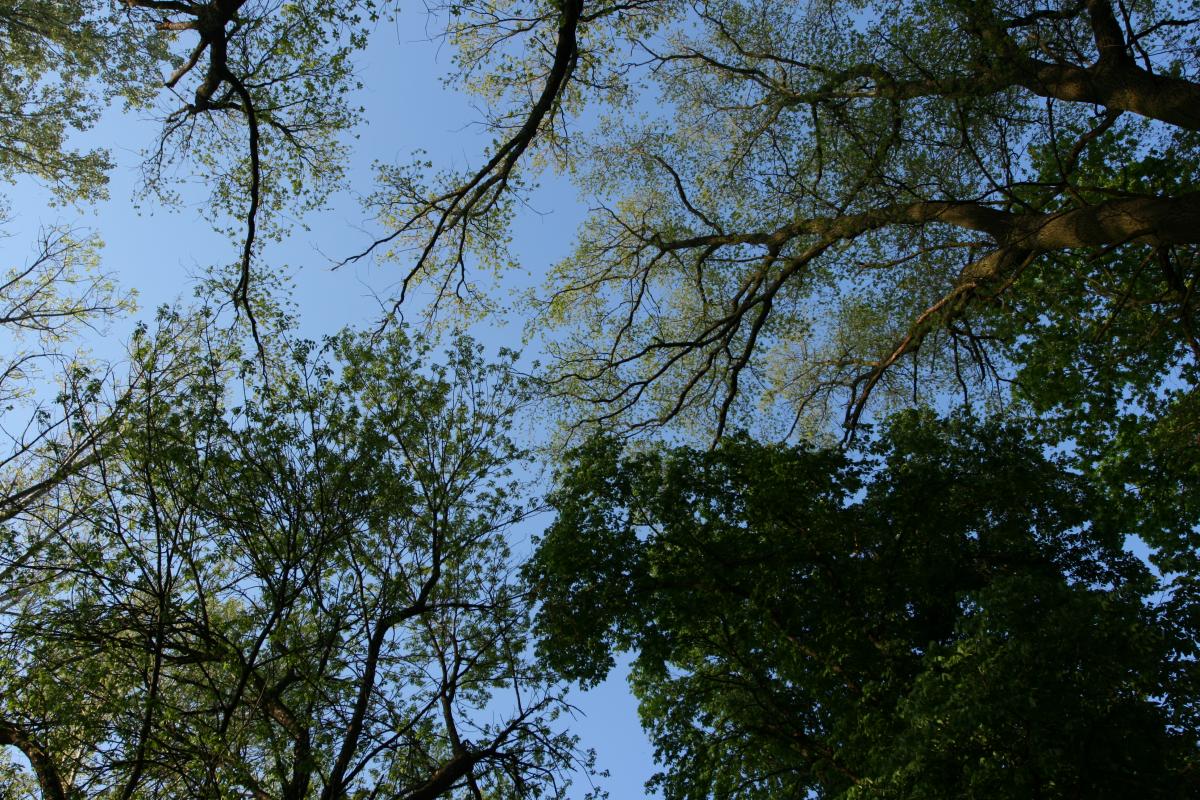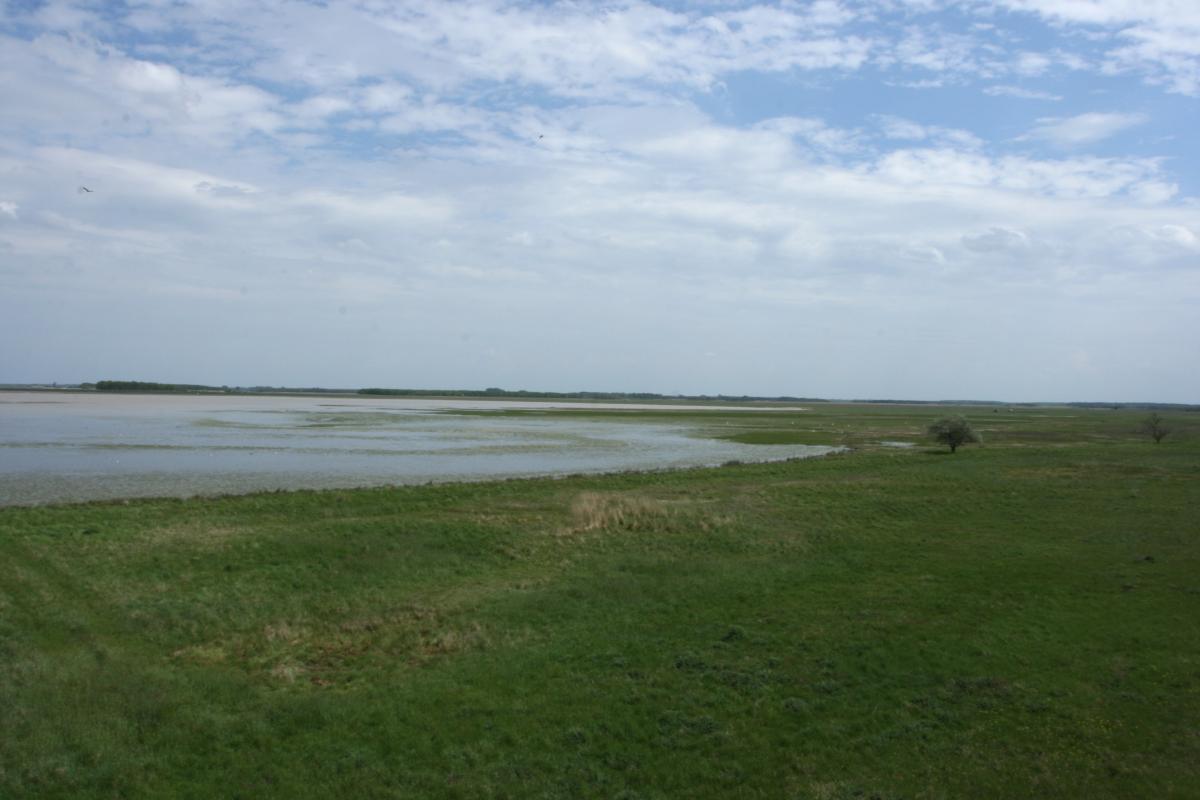Roller habitats in late April
30.04.2015. 15:00
The trees are just beginning to leaf in the characteristic roller habitat, the floodplain gallery forest. The picture below shows the canopy of a typical oak-ash-elm association, that used to be common at higher elevations along River Tisza floodplain in Hungary. This plant association prefers the rarely inundated areas; its most characteristic species are the pedunculate oak (Quercus robur), the narrow-leaved ash (Fraxinus angustifolia subsp. pannonica) and European white elm (Ulmus laevis). This habitat type became very rare after the river regulations, due to the more frequent and higher level floods, and only small fragments of it remained - most of which are located outside the dykes. The last specimens of the protected herbaceous plant, the spring snowflake (Leucojum vernum) were also seen on this walk.

Oak-ash-elm gallery forest canopy at the end of April (Photo: Gabriella Göcző).

Fresh elm leaves (Photo: Gabriella Göcző).

Spring snowflake (Photo: Gabriella Goczo).
The Hungarian short-grassed steppe, the “puszta” also shows the signs of spring - around the Büdös-szék alkaline salt lake an astonishing water world can be seen, it is a real, but ephemeral bird paradise!

Büdös-szék (Photo: Gabriella Göcző).
Most of the salt pan is covered by shallow water now, offering a perfect foraging site for countless bird species. During a short walk we’ve observed spoonbills, great egrets, greylag geese, all sorts of shore birds, various duck species, and large flocks of gulls and terns. We’ve heard bitterns booming in the reedbeds, of which a marsh harrier hovered above.
A little further away, in the grassland we saw a little owl, a hunting red-footed falcon, and the roller - the jewel of the grassland – was also seen.

Roller (Photo: Tamás Szitta).
Gabriella Göcző


















